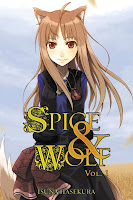 Author: Hiroshi Sakurazaka
Author: Hiroshi Sakurazaka
Translator: Joseph Reeder
U.S. publisher: Viz Media
ISBN: 9781421534398
Released: April 2010
Original release: 2005
I picked up Hiroshi Sakurazaka’s Slum Online after reading and thoroughly enjoying his light novel All You Need Is Kill. Slum Online is the second of Sakurazaka’s works to be made available in English. Originally released in Japan in 2004, the book was published in 2010 by Viz Media’s Haikasoru imprint (which also published All You Need Is Kill). The Haikasoru edition, translated by Joseph Reeder, also contains the additional story Bonus Round that Sakurazaka wrote specifically for the English release. Bonus Round takes place immediately after the events of Slum Online and serves as a sort of epilogue. Considering how much I enjoyed All You Need Is Kill, I was looking forward to reading Slum Online a great deal. (Plus, toi8’s cover art is fantastic).
Etsuro Sakagami doesn’t have many close friends at his university and so spends most of his free time at home playing the online fighting game Versus Town. His character, the karateka Tetsuo, is quickly moving up in the ranks and has a good shot of winning the second season tournament. But a mysterious player known as Ganker Jack has been targeting the top characters and taking them down. Tetsuo joins a handful of others in trying to figure out just who this player is. In real life, Etsuro is faced with a challenge of a different kind. Fumiko, a girl he never expected to like, has roped him into searching all over Shinjuku for a blue cat rumored to grant wishes. They may just be chasing an urban legend, but Etsuro is surprised to discover how much he enjoys spending time with her and must figure out a way to balance Tokyo and Versus Town.
I am very glad that Bonus Round was included in the book. Although Slum Online has an established ending, Bonus Round rounds out the story in a very satisfying way and allows the reader to see things from another character’s perspective. Which isn’t to say being inside of Etsuro’s head isn’t interesting—I actually quite liked the guy. He tends to describe his real life experiences in terms of video games but he isn’t so far gone that he’s completely incompetent socially, though he does have his moments. One thing that I found rather clever were the in-game fight sequences, of which there are plenty. They are described in such a way that combines both the controls needed to execute the moves and the action occurring on the screen. The result is quite effective.
Although I wasn’t quite as taken with Slum Online as I was with All You Need Is Kill, I was still highly entertained by the book. The story is most likely going to appeal to readers who are already interested in video games to some extent, but Sakurazaka does have some interesting things to say about friendship and the differing and sometimes overlapping realities of online and offline personas. Slum Online is a very straightforward story with little actual plot beyond Etsuro working to become the best player in Versus Town while trying to maintain some semblance of a relationship with the people in his real life; it may not be particularly deep, but it is fun. I have no complaints with Reeder’s translations—it’s smooth and unobtrusive while bringing out Sakurazaka’s wonderful, not quite snarky, resigned sense of humor. Although not for everyone, I found Slum Online to be a fast and enjoyable light read. Personally, I wouldn’t hesitate to pick up another of Sakurazaka’s works, so here’s hoping more become available in English.


